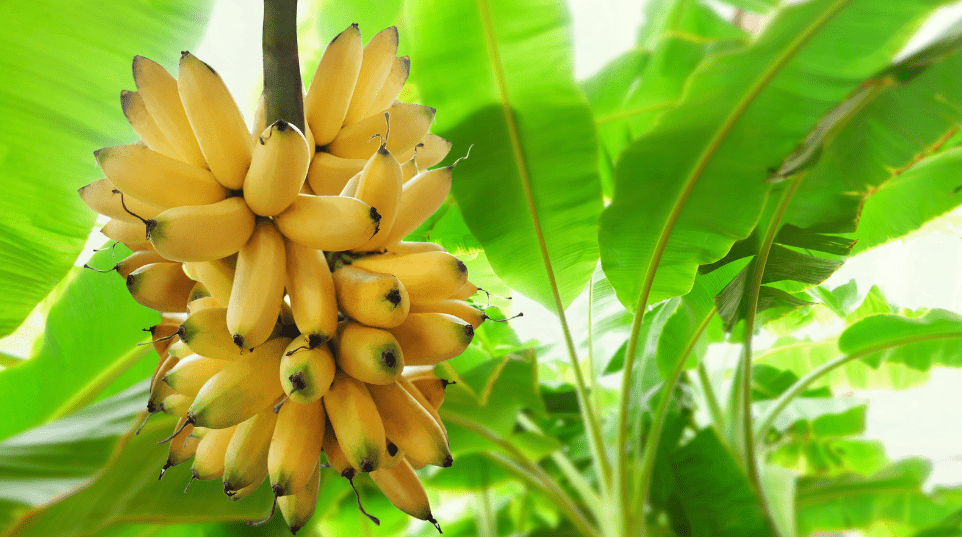
Banana Plants: Best Varieties for Your Home Garden
Banana plants can be a great addition to any home garden, providing not only delicious fruit but also a tropical and lush aesthetic. In this post, we will explore the best varieties of banana trees s for home gardens, offering tips on cultivation and care. Additionally, we will discuss the benefits of growing banana plants at home and provide guidance on ensuring a successful harvest. Whether you’re a seasoned gardener or just starting out, this post will help you make the most of your banana trees cultivation.
Table of Contents
ToggleUnderstanding Banana Plants
1.General Characteristics
Banana plants are known for their large, lush leaves and vibrant, tropical appearance. They can add a beautiful and exotic touch to any home garden. There are many different varieties of banana trees to choose from, each with its own unique characteristics and flavors. Some popular varieties include the Cavendish, Lady Finger, and Plantain bananas. These plants thrive in warmer climates and can be grown in containers or directly in the ground. They require well-drained soil and plenty of sunlight to flourish. With proper care and maintenance, banana plants can produce an abundant harvest of delicious and nutritious fruit. Whether you’re looking to add a touch of the tropics to your garden or enjoy the satisfaction of growing your own fruit, banana plants are an excellent choice for home gardeners.
2.Climate and Soil Requirements
Banana plants thrive in warm, tropical climates and require well-drained soil and plenty of sunlight to flourish. They can be grown in containers or directly in the ground, making them versatile for different types of home gardens. It’s important to choose the right variety of banana saplings that is suitable for your specific climate and soil conditions. For example, some varieties are more tolerant of cooler temperatures, while others require a more humid and tropical environment to thrive. When planting banana plants, it’s important to ensure that the soil is well-drained to prevent waterlogging, which can lead to root rot. Adding organic matter to the soil can also help improve drainage and provide essential nutrients for the plants. Understanding the climate and soil requirements for banana plants is essential for successful cultivation and care in a home garden.
Benefits of Growing Banana Plants at Home
1.Nutritional Value
Bananas are a highly nutritious fruit and growing them at home can provide you with a fresh and healthy source of vitamins and minerals. They are an excellent source of potassium, vitamin C, and vitamin B6, as well as high in fiber and low in calories. Adding homegrown bananas to your diet can help support a healthy lifestyle and provide a delicious and nutritious snack for you and your family. Additionally, cultivating banana seeding at home can be a rewarding experience, as you get to enjoy the satisfaction of growing your own fruit and adding a touch of the tropics to your garden. With the right care and attention, you can have a bountiful harvest of delicious bananas right in your backyard. So, if you’re considering adding banana plants to your home garden, make sure to choose the right variety for your climate and soil conditions and enjoy the nutritional and emotional benefits of growing your own bananas.
2.Aesthetic and Environmental Benefits
In addition to the nutritional value, growing banana plants at home can also provide aesthetic and environmental benefits. The lush, tropical foliage of banana plants can add a beautiful and exotic touch to your garden, creating a visually appealing landscape. Additionally, banana plants can help to improve air quality by removing pollutants and releasing oxygen, contributing to a healthier environment. In areas with high humidity, banana seedings can also help to reduce moisture levels in the air, creating a more comfortable and enjoyable outdoor space. Overall, cultivating banana plants at home not only provides delicious and nutritious fruit but also offers a range of aesthetic and environmental benefits for your garden.
3.Economic Benefits
In addition to the nutritional and aesthetic benefits, growing banana trees at home can also provide economic benefits. By cultivating banana plants in your own garden, you can save money on buying bananas from the store. Additionally, if you have a surplus of bananas, you can share or sell them to friends, family, or local markets, potentially earning some extra income. This can also contribute to a more sustainable and self-sufficient lifestyle. So, if you’re looking for a fruit that offers not only delicious taste and nutritional value but also potential economic benefits, consider adding banana plants to your home garden. With the right care and attention, you can enjoy a bountiful harvest and reap the economic rewards of growing your own bananas.
Top Banana Plant Varieties for Home Gardens
1.Dwarf Cavendish
Dwarf Cavendishis one of the best banana plant varieties for home gardens. It is a small, compact plant that produces delicious, sweet bananas. It grows well in containers and can be easily grown indoors or in a small outdoor space. Dwarf Cavendish bananas are popular for their ease of cultivation and their ability to thrive in various climates. When caring for a Dwarf Cavendish plant, it is important to provide well-drained soil, ample sunlight, and regular watering. With proper care, you can enjoy a bountiful harvest of tasty bananas from your own garden.
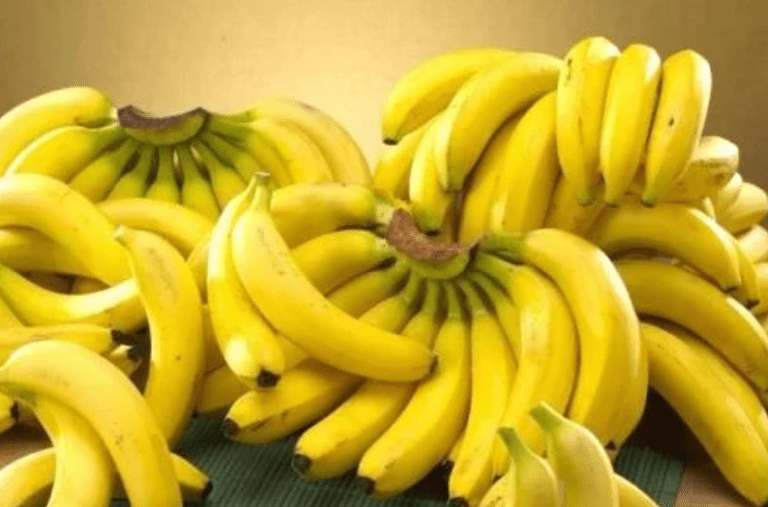
2.Rajapuri
Rajapuri bananas are another great variety for home gardens. These plants are known for their ability to withstand colder temperatures, making them a great choice for those in cooler climates. Rajapuri bananas are also known for their sweet taste and creamy texture, making them a favorite among banana enthusiasts. When cultivating Rajapuri banana plants, it is important to provide ample sunlight, well-drained soil, and regular watering. With the right care, you can enjoy a plentiful supply of delicious bananas from your own garden.
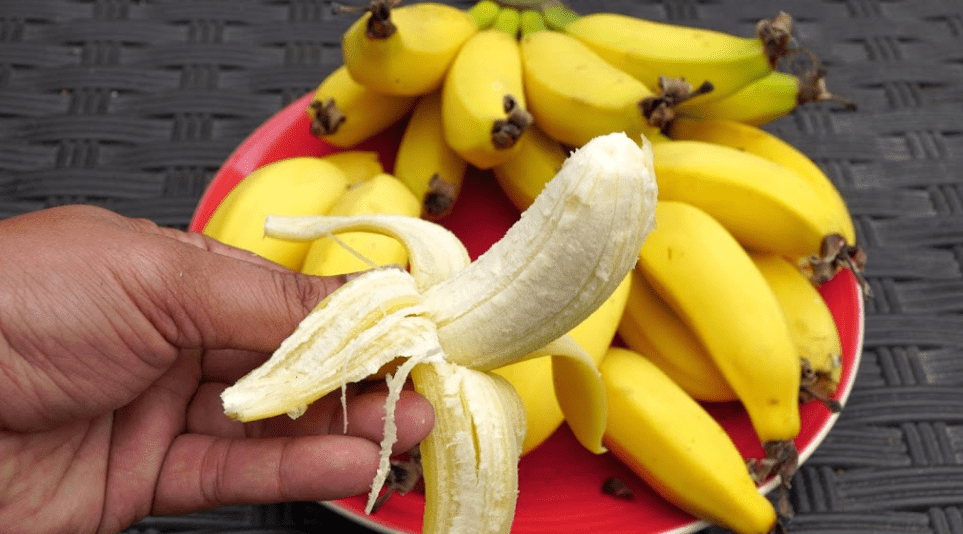
3.Lady Finger (Sugar Banana)
Lady Finger is another popular variety for home gardens. These plants are known for their sweet, delicate flavor and are a favorite for eating fresh or using in desserts. Lady Finger bananas are also well-suited for growing in containers, making them perfect for smaller outdoor spaces or indoor gardens. When cultivating Lady Finger banana plants, it’s important to provide well-drained soil, ample sunlight, and regular watering. With the right care, you can enjoy a continuous supply of delicious, sweet bananas from your own garden. Overall, growing banana plants at home can be a rewarding and enjoyable experience, providing a bountiful harvest of tasty fruit and adding a tropical touch to your garden.
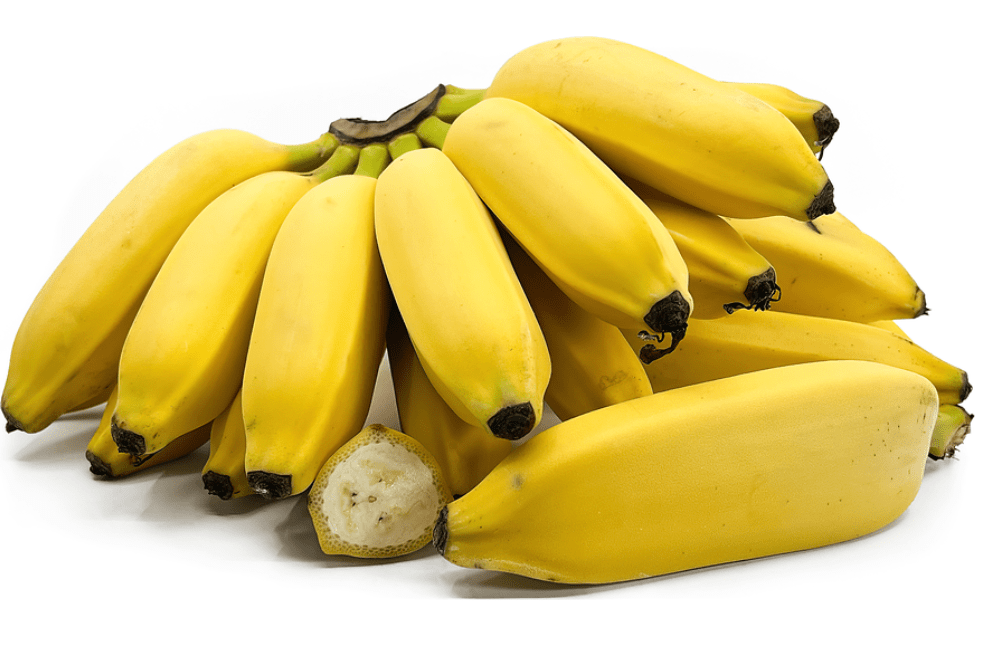
4.Red Banana
Red Banana plants are a stunning addition to any home garden. With their vibrant red skins and sweet, creamy flavor, they are a favorite among banana enthusiasts. When cultivating Red Banana plants, it is important to provide them with plenty of sunlight, well-drained soil, and regular watering. These plants also benefit from regular feeding and protection from strong winds. With the right care, you can enjoy a plentiful supply of delicious Red Bananas from your own garden.
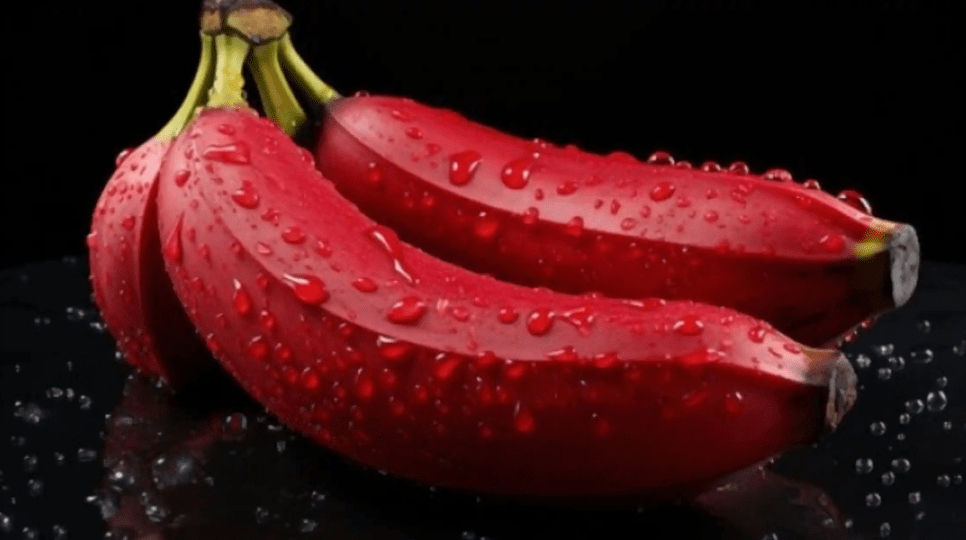
5.Blue Java (Ice Cream Banana)
Blue Java is another great variety for home gardens. These bananas have a unique flavor that is often compared to vanilla ice cream, making them a popular choice for those with a sweet tooth. When cultivating Blue Java banana plants, it’s important to provide them with well-drained soil, regular watering, and protection from strong winds. These plants thrive in tropical climates and can be a stunning addition to any garden. Overall, growing banana plants at home can be a rewarding experience, providing a bountiful harvest of delicious fruit and adding a tropical touch to your garden. With the right care and attention, you can enjoy the benefits of growing your own bananas right in your backyard.
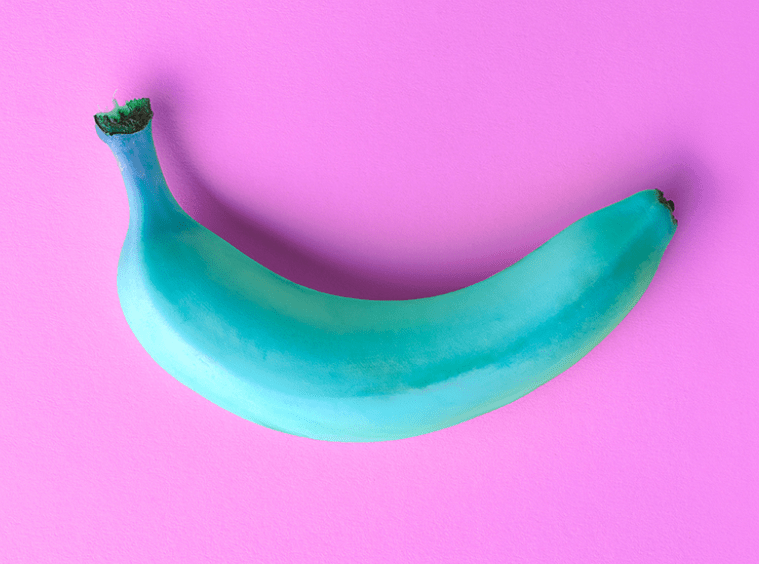
6.Manzano (Apple Banana)
Manzano is another great variety for home gardens. These bananas have a sweet and tangy flavor with a hint of apple, making them a delicious choice for snacking and cooking. When cultivating Manzano banana plants, it is important to provide them with plenty of sunlight, well-drained soil, and regular watering. These plants also benefit from regular feeding and protection from strong winds. With the right care, you can enjoy a plentiful supply of tasty Manzano bananas from your own garden. Overall, growing banana plants at home can be a rewarding experience, providing a bountiful harvest of delicious fruit and adding a tropical touch to your garden. With the right care and attention, you can enjoy the benefits of growing your own bananas right in your backyard.
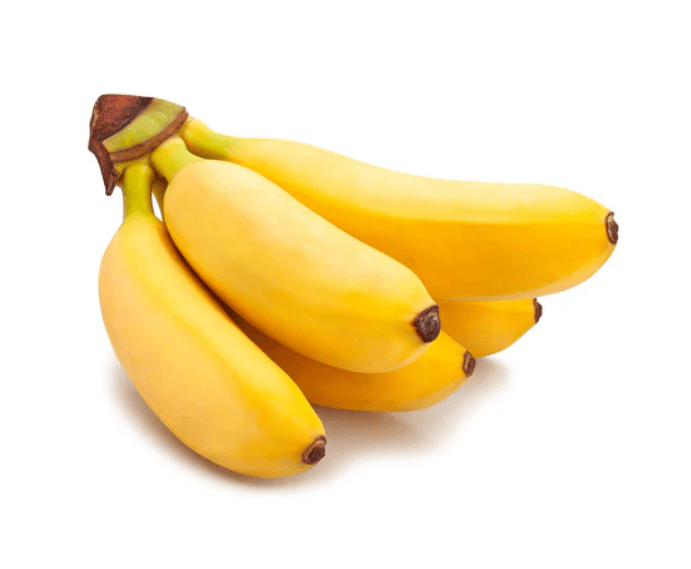
Planting and Growing Tips
1.Selecting the Right Variety
When it comes to growing banana plants in your home garden, it’s important to select the right variety. One great choice is the Manzano, also known as the Apple Banana. These bananas have a sweet and tangy flavor with a hint of apple, making them perfect for snacking and cooking. When cultivating Manzano banana plants, it’s crucial to provide them with plenty of sunlight, well-drained soil, and regular watering. These plants also benefit from regular feeding and protection from strong winds. With the right care, you can enjoy a plentiful supply of tasty Manzano bananas from your own garden. Overall, growing banana plants at home can be a rewarding experience, providing a bountiful harvest of delicious fruit and adding a tropical touch to your garden. So, if you’re looking to add a touch of the tropics to your backyard, consider growing your own banana plants and enjoy the delicious fruit they produce.
2.Planting Process
When planting banana plants, make sure to choose a location that receives plenty of sunlight. These plants thrive in warm and humid climates, so it’s important to provide them with the right conditions. When planting the banana plant, be sure to dig a hole that is deep enough to accommodate the roots and add some organic matter to the soil to help with drainage and fertility. It’s also important to space the plants at least 10-12 feet apart to allow for proper growth and development. After planting, be sure to water the plants regularly and provide them with the nutrients they need to thrive. With the right care and attention, you can enjoy a lush and bountiful banana plant in your home garden.
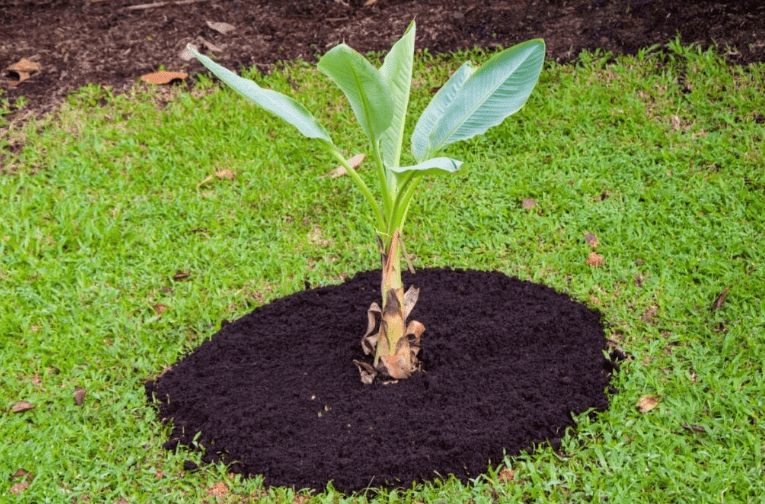
3.Watering and Fertilizing
Watering and Fertilizing are essential aspects of caring for banana plants. It’s important to water your banana plants regularly, making sure that the soil is consistently moist but not waterlogged. Banana plants require a lot of water, especially during the growing season, so be sure to keep an eye on the soil moisture and water as needed.
In terms of fertilizing, banana plants are heavy feeders and require regular fertilization to support their growth and fruit production. Use a well-balanced fertilizer that is high in potassium, as this is essential for healthy fruit production. Apply the fertilizer every few months, following the instructions on the product label.
By providing your banana plants with the right amount of water and nutrients, you can ensure that they thrive and produce an abundance of delicious fruit for you to enjoy. With proper care and attention, growing banana plants at home can be a rewarding and fruitful experience.
4.Pest and Disease Management
Pest and Disease Management are important factors to consider when growing banana plants. Common pests that can affect banana plants include aphids, thrips, and nematodes. To manage these pests, you can use insecticidal soaps or oils, as well as beneficial predators like ladybugs. It’s also important to keep an eye out for any signs of disease, such as fungal infections or bacterial wilt, and take prompt action to address these issues. Regular inspection and maintenance of your banana plants can help you identify and address any pest or disease problems before they escalate. By incorporating these tips into your banana plant care routine, you can enjoy healthy and thriving banana plants in your home garden.
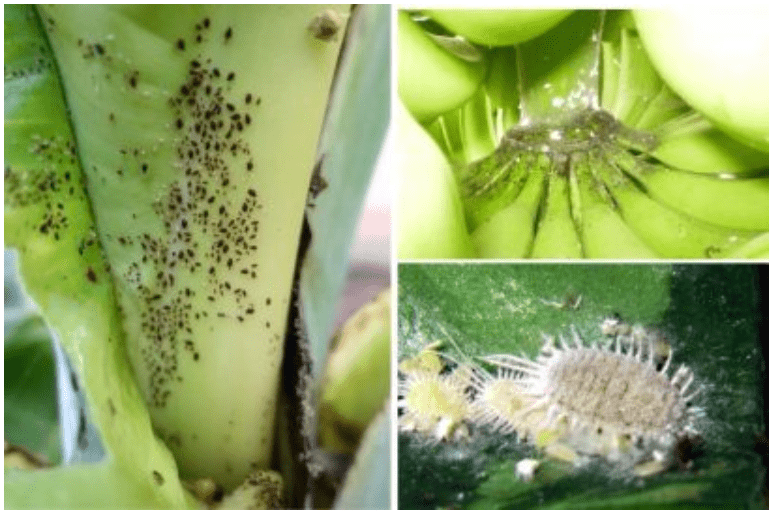
Harvesting and Using Homegrown Bananas
1.When to Harvest
Harvesting your bananas is a critical step in ensuring that they are flavorful and ready to enjoy. Typically, bananas are ready to harvest when they have turned a yellow color and the fruit has filled out completely. You can also look for small brown spots on the skin, which indicates that the bananas are ripe and ready to be picked. Additionally, you can gently squeeze the bananas to check for ripeness – they should yield slightly to pressure without being too soft. Once your bananas are ready to harvest, you can simply cut the entire bunch from the plant and let them continue to ripen indoors. This will allow you to enjoy fresh, homegrown bananas at their peak of flavor. With the right care and attention, you can cultivate a thriving banana plant in your home garden and enjoy the delicious fruits it produces.
2.Harvesting Techniques
There are certain techniques to keep in mind when harvesting bananas from your plant. First, it’s important to know when to harvest. Bananas are ready when they have turned a yellow color and the fruit has filled out completely. Look for small brown spots on the skin or gently squeeze the bananas to check for ripeness. Once they are ready, simply cut the entire bunch from the plant and let them continue to ripen indoors. This will allow you to enjoy fresh, homegrown bananas at their peak of flavor. Following these harvesting techniques will ensure that you can enjoy delicious, homegrown bananas from your garden.
3.Storing and Ripening
Once you have harvested your bananas, it’s important to know how to store and ripen them properly. To ripen your bananas, you can place them in a paper bag with an apple or a ripe banana. These fruits give off ethylene gas, which helps to speed up the ripening process. You can also place unripe bananas in a warm, sunny spot to help them ripen more quickly.
Once your bananas have ripened to your liking, you can store them in the refrigerator to stop the ripening process. This will help to keep them fresh for a longer period of time. If you have more bananas than you can eat right away, you can also peel them and store them in the freezer for use in smoothies or baking at a later time.
By following these tips for storing and ripening your homegrown bananas, you can ensure that you have a steady supply of delicious, fresh fruit right from your own garden.
4.Creative Uses for Homegrown Bananas
There are many creative uses for homegrown bananas that go beyond just eating them plain. You can use them to make delicious smoothies, banana bread, muffins, and even ice cream. Bananas are also great for adding a natural sweetness to oatmeal, yogurt, and pancakes. Additionally, you can use overripe bananas to make natural face masks and hair treatments. The possibilities are endless when it comes to using homegrown bananas in creative and unique ways. So not only are you benefiting from the delicious fruit, but you can also get creative in the kitchen and with your self-care routine.
Troubleshooting Common Problems
1.Yellowing Leaves
Yellowing Leaves on banana plants can be a common issue for home gardeners. This can be a sign of a few different problems, such as overwatering, underwatering, or a nutrient deficiency. To address this issue, be sure to check the soil moisture regularly and adjust your watering schedule accordingly. Additionally, consider adding a balanced fertilizer to replenish any nutrients that may be lacking. It’s important to monitor the overall health of your banana plants and make adjustments as needed to ensure they thrive in your home garden.
2.Slow Growth
Slow Growth can be a common issue for banana plants in home gardens. This could be due to a lack of sunlight, inadequate watering, or poor soil quality. To encourage faster growth, make sure your banana plants are getting enough sunlight and water. Consider adding organic matter to the soil to improve its quality. Additionally, using a balanced fertilizer can provide the necessary nutrients for healthy growth. By addressing these factors, you can help your banana plants thrive and produce delicious fruit. It’s important to be patient and consistent in caring for your banana plants, as they can be a rewarding addition to your home garden.
3.Poor Fruit Production
Poor Fruit Production is a common issue that home gardeners may experience with their banana plants. This could be due to a lack of proper care and maintenance. To encourage better fruit production, make sure your banana plants are getting enough sunlight, water, and nutrients. Consider pruning any dead or damaged leaves to promote healthy growth and fruit development. Additionally, keep an eye out for any pests or diseases that could be affecting your banana plants and take appropriate measures to address these issues. With the right care and attention, you can improve the fruit production of your banana plants and enjoy delicious home grown bananas.
4.Pest Infestations
Pest Infestations can be a major challenge for banana plant cultivation. Common pests that can infest banana plants include aphids, mealybugs, and banana weevils. To prevent and manage pest infestations, it’s important to regularly inspect your plants for signs of pest activity. You can also introduce natural predators or beneficial insects, such as ladybugs or lacewings, to help control pest populations. Additionally, using organic pest control methods, such as neem oil or insecticidal soap, can be effective in managing pest infestations without harming the plant or the environment. By being proactive in preventing and managing pest infestations, you can help your banana plants to flourish and produce healthy fruit.
In conclusion, when it comes to cultivating banana plants in your home garden, it’s important to choose the right variety that suits your climate and space. Some popular varieties for home gardens include the Dwarf Cavendish, Lady Finger, and the Ice Cream Banana. It’s also important to provide proper care and maintenance for your banana plants, including regular watering, fertilizing, and protection from pests and diseases. With the right variety and proper care, you can enjoy a successful harvest of delicious homegrown bananas.
Frequently Asked Question
Some of the best varieties for a home garden include the Dwarf Cavendish, the Williams Hybrid, and the Lady Finger banana plants. These varieties are smaller in size and are well-suited for growing in a home garden.
Banana plants thrive in tropical and subtropical climates, so they may not be suitable for colder climates. However, there are some cold-hardy varieties such as the Japanese fiber banana that can survive in cooler temperatures.
Banana plants prefer full sunlight, so it’s best to plant them in a location where they can receive at least 6-8 hours of direct sunlight each day.
Banana plants require regular watering, especially during the growing season. It’s important to keep the soil consistently moist, but not waterlogged, to ensure healthy growth.
Banana plants thrive in well-draining, fertile soil with plenty of organic matter. It’s also beneficial to fertilize banana plants with a balanced fertilizer that contains nitrogen, phosphorus, and potassium.
Depending on the variety and growing conditions, banana plants can take anywhere from 9 months to 2 years to produce fruit. It’s important to provide the proper care and maintenance to encourage fruit production.
Yes, certain varieties of banana plants, such as the Dwarf Cavendish, can be successfully grown in containers. It’s important to choose a large enough container and provide proper drainage for the plant to thrive.
Banana plants are susceptible to diseases such as Panama disease and pests like aphids and mites. It’s important to monitor the plants for any signs of disease or infestation and take appropriate measures to control them.
